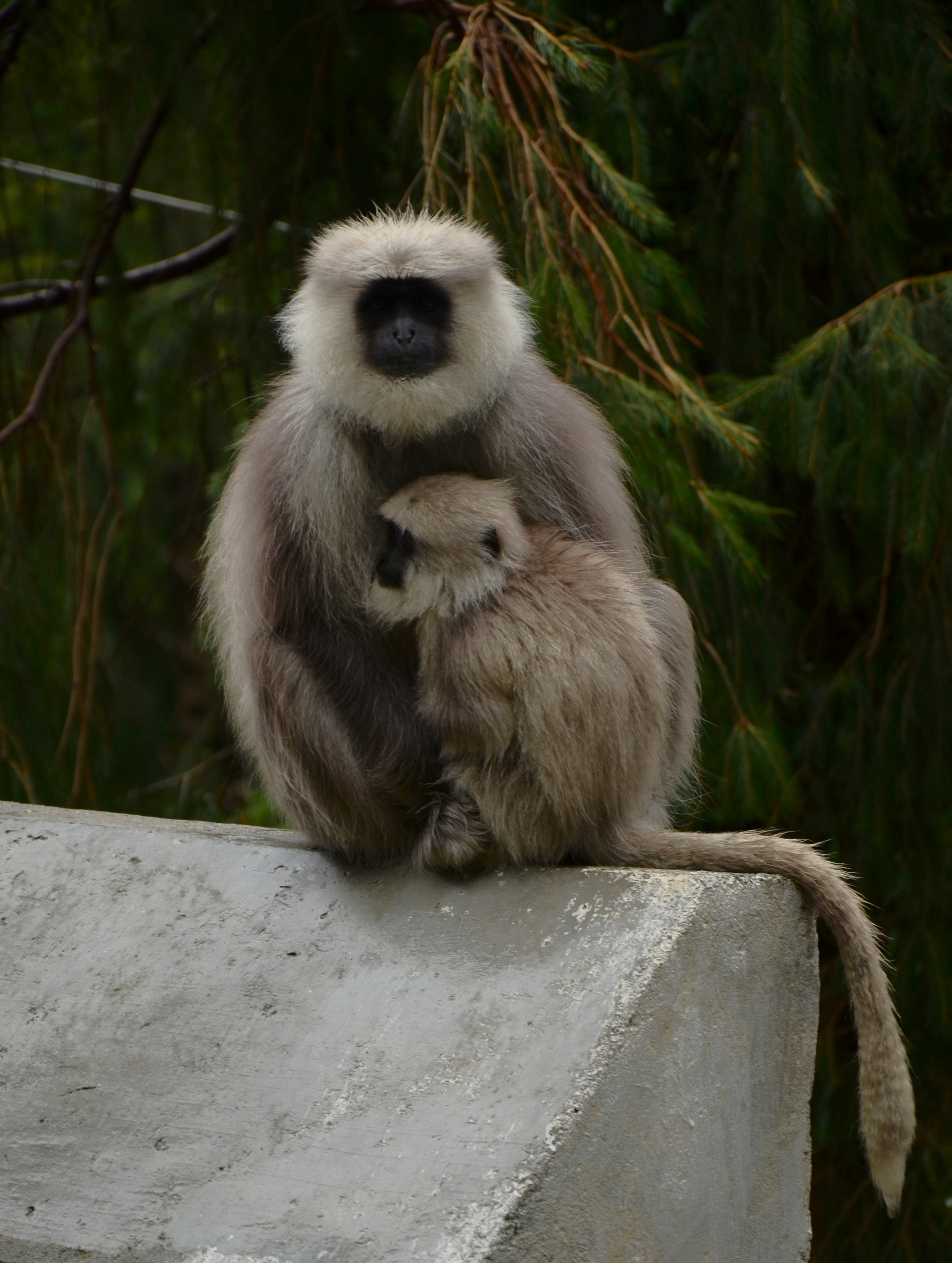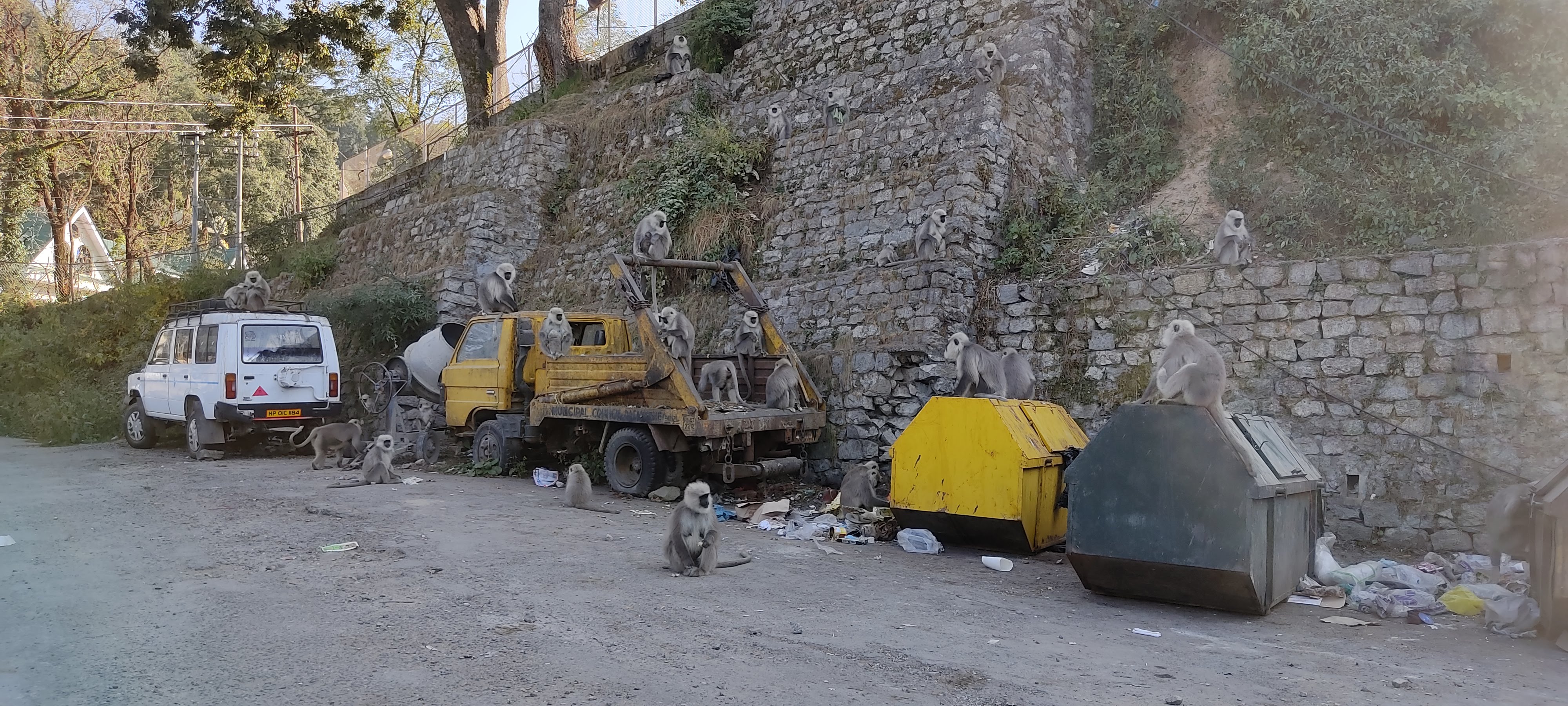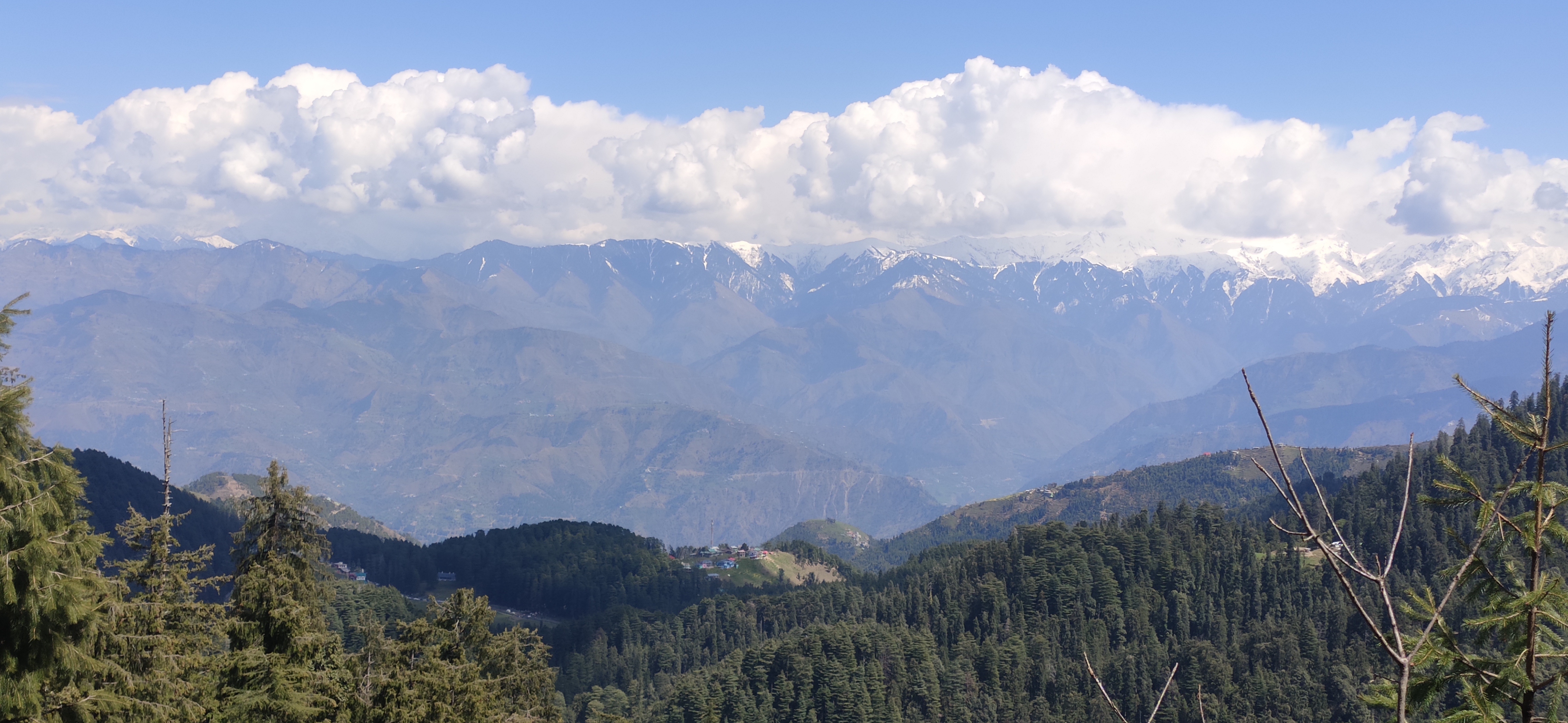Outside Sacred Territory
First published on
December 12, 2021
The Himalayan grey langur, also known as the Chamba sacred langur, is an endangered species endemic to the Chamba valley in Himachal Pradesh. It is one of the least studied species of langurs. In 2012-2013 a study on this shy primate was conducted by Wildlife Information Liaison Development Society Coimbatore, which made it the only study on the species in 84 years since 1928!
The Himalayan grey langur is folivorous (leaf-eater) and lives on a diet rich in leaves, buds, flowers, fruits, stems, barks, and even roots. They have also been observed to feed on insects. They can be confused with other species of langurs but are differentiated by their relatively larger size and the dark, silvery mane that covers the outer sides of both the fore and hind limbs. They have elegant long tails which, when walking, is worn over the back in an arch that curves towards the head.

A female Himalayan Grey Langur with her young one in Chamba. Photo: Vishal Ahuja.
Sanctuary’s Mud on Boots Project Leader Vishal Ahuja was part of the team that conducted the study on the Chamba sacred langur back in 2012-2013. During their study, Vishal and his colleagues found that the primate has a very restricted range and is present in an area of occupancy less than 500 sq. km. Within this limited area, they make seasonal movements to adjust to changing environmental conditions which impact the availability of their food resources. The total population of this endangered species was estimated at a mere 250 mature individuals.

A troop of Chamba sacred langurs forage at a garbage collection point in the outskirts of Dalhousie town in Chamba, Himachal Pradesh. Photo: Vishal Ahuja.
Primates like the Chamba sacred langur are important as they perform crucial ecological services such as pollination and seed dispersal. They are important for forest regeneration and survival. However, this enigmatic species is threatened by habitat loss and the resulting scarcity of food in its only own home.
For the past nine years, Vishal has been documenting the wild dietary preferences of the Himalayan grey langur, rhesus macaque, and Himalayan black bear in the fragmented natural landscape around the Khajjiar-Kalatop Wildlife Sanctuary. He has observed that langurs come to agriculture fields during the harvest season and move back into the deep forests within the sanctuary during other times of the year. This depredation happens because of the gradual degradation and fragmentation of the forests that used to act as the buffer between the wildlife sanctuary and nearby villages.
 A view of Khajjiar Kaatop Wildlife Sanctuary in Chamba. Photo: Vishal Ahuja.
A view of Khajjiar Kaatop Wildlife Sanctuary in Chamba. Photo: Vishal Ahuja.
While working as a Mud on Boots Project Leader, Vishal has initiated work on a long-term habitat restoration project around Kalatop-Khajjiar Wildlife Sanctuary. This includes raising a plant nursery from seeds of native plants after collecting and germinating them and planting over 300 saplings of native plants in abandoned farmlands with the consent and support of local landowners.
Vishal is currently working with Wildlife Information Liaison Development Society Coimbatore and the Forest Department to conduct a first-of-its-kind census of the Chamba sacred langur. This census will provide new information on the primate and thereby form the basis for future conservation strategies for the species and its habitat. This is a continuation of the re-wilding project and awareness work he has been carrying out in Chamba.




